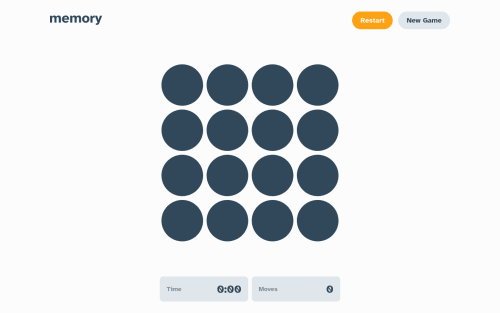Responsive memory game using React/Material UI/TypeScript

Solution retrospective
Did everything I could to get it closely resembling the Figma mockups. There was heavy use of Material UI components and theming all throughout the app. I opted not to use the React context API for state management and instead just dealt with some prop drilling. I was sort of 50/50 on it but reading the React docs they recommend all alternatives and using it as a last case scenario when things get very complex. This helps with needless renders and better performance overall. For the icons I loaded a bunch of random ones in from the MUI Icon library. Definitely I recommend people use TypeScript when working with MUI and React. Helps a ton when developing!
Hope to hear all the feedback and recommendations.
Please log in to post a comment
Log in with GitHubCommunity feedback
No feedback yet. Be the first to give feedback on Curtis's solution.
Join our Discord community
Join thousands of Frontend Mentor community members taking the challenges, sharing resources, helping each other, and chatting about all things front-end!
Join our Discord